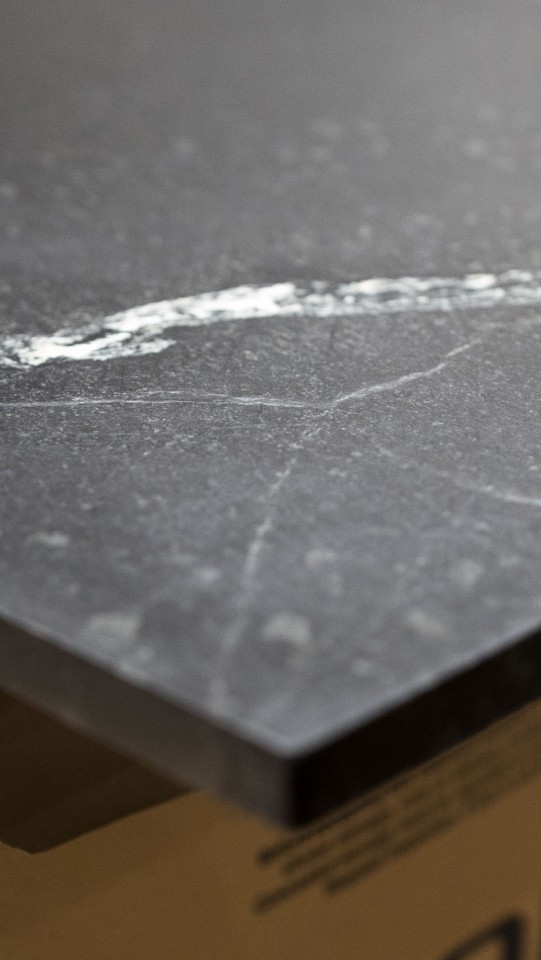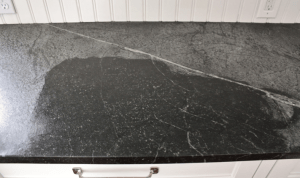As a natural stone, traditional soapstone ages gracefully and shows signs of wear over time – an organic and distressed look, if you desire. The aging of the soapstone or patina adds to the authenticity of your home, especially in your kitchen where most of the life action happens.
This aging of soapstone is very authentic looking. When GSS installs your countertop, we apply our organic soapstone wax to begin the aging process. We recommend you keep up this maintenance by using our soapstone oil to ensure uniform darkening or aging, but it’s ultimately up to you.
Wax vs. Oil
Why do you need to treat soapstone if it’s already nonporous and antibacterial? Keep in mind, you’re not sealing the stone like you would with granite or marble. You’re just treating the soapstone, which accelerates the aging process and does not affect the characteristics. The wax and/or oil treatment simply enhances the natural beauty and helps it look beautiful for years to come.
Similar to polishing antique wood to bring out the natural color, our wax and oil brings out the natural soapstone patina faster and consistently. If you choose to leave the stone untreated, or do not follow-up with oil, the stone will age inconsistently. It may look darker in some areas and lighter in others. The treatment keeps this from happening by allowing the stone to darken evenly.
While we apply our wax immediately after install, we recommend the oil for regular maintenance afterwards. The wax is more difficult to apply, and we’ve seen that homeowners keep up treatment better with our easy-to-use soapstone oil.
Hard and Soft Soapstone Patina
There is traditional soapstone which is softer, feels more soft and soapy, due to the talc content and then there is harder soapstone, twice as hard as traditional soapstone. Traditional soapstone will age, scratch or patina organically. Traditional soapstone will require more oil to darken or age because of the higher talc content. The oil or wax dissipates faster due to the high talc content and doesn’t darken as quickly. To keep the surface darkening uniformly, you could treat with the oil as often as you want and speed up the aging process.
Harder soapstone countertops require less oil or wax treatment and will age faster, because they have a lower talc content. They are usually a darker color to begin with.
Scratches
One concern homeowners have when purchasing a traditional softer stone is the potential scratching. However, soapstone is incredibly forgiving when it comes to scratches. We happen to think that the scratches add beauty and authenticity to the countertop – showing the hours spent in the kitchen baking or preparing a meal.
But sometimes you want a scratch-free surface. All you need is 120 grit sandpaper to sand out the scratches, and then you apply the oil or wax, wipe on, wipe off. The scratch is gone, and your countertop is back to its original state.
With trends pointing towards distressed wood and floors, the distressed soapstone countertop fits right in. The traditional, softer soapstone will look slightly darker each time guests visit, but you’ll have evidence of the life you’re living in your home.





Recent Comments